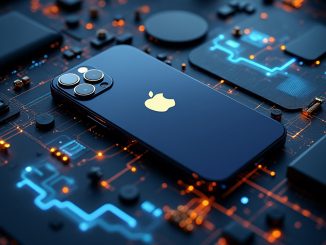
In a move that signals a significant shift in smartphone display technology, Apple Inc. (AAPL) is reportedly planning to equip all iPhone models with organic light-emitting diode (OLED) displays starting in 2025. This transition, as reported by Japan’s Nikkei newspaper citing unnamed sources, marks the tech giant’s complete departure from liquid crystal displays (LCDs) in its flagship product line.
The adoption of OLED technology across Apple’s entire iPhone range underscores the growing preference for these advanced displays in the consumer electronics industry. OLED screens are known for their ability to deliver more vibrant colors and sharper contrast, making them ideal for high-definition video content and enhancing overall visual experiences.
This strategic decision by Apple is expected to have far-reaching implications for its supply chain. Notably, the shift may exclude Japan’s Sharp Corp and Japan Display from Apple’s handset business. These companies, which once held a combined 70% share of iPhone displays about a decade ago, have recently only supplied LCDs for the iPhone SE model and do not mass-produce OLED displays for smartphones.
In preparation for this transition, Apple has reportedly begun placing orders for OLED displays for the upcoming iPhone SE model. The company is turning to China’s BOE Technology and South Korea’s LG Display to fulfill these requirements, further diversifying its supplier base for this crucial component.
The move towards OLED is not entirely new for Apple. The company first introduced OLED panels in the iPhone X, unveiled in 2017, and has since incorporated them into its premium iPhone models. More recently, Apple extended the use of OLED screens to its latest generation iPad Pro models launched in May 2023, indicating a broader adoption of this display technology across its product lines.
This shift reflects Apple’s commitment to staying at the forefront of display technology and maintaining its competitive edge in the highly saturated smartphone market. By standardizing OLED displays across its iPhone range, Apple aims to offer a consistent, high-quality visual experience to all its users, regardless of the model they choose.
As the 2025 deadline approaches, industry observers will be keenly watching how this transition unfolds and its impact on Apple’s supply chain, product pricing, and overall market strategy. This move could potentially spark a wider industry trend, encouraging other smartphone manufacturers to accelerate their adoption of OLED technology.
While the full ramifications of this decision remain to be seen, one thing is clear: Apple’s commitment to OLED displays signals a new chapter in smartphone display technology, one that promises to deliver enhanced visual experiences to consumers worldwide.
- Bulenox: Get 45% to 91% OFF ... Use Discount Code: UNO
- Risk Our Money Not Yours | Get 50% to 90% OFF ... Use Discount Code: MMBVBKSM
Disclaimer: This page contains affiliate links. If you choose to make a purchase after clicking a link, we may receive a commission at no additional cost to you. Thank you for your support!




Leave a Reply